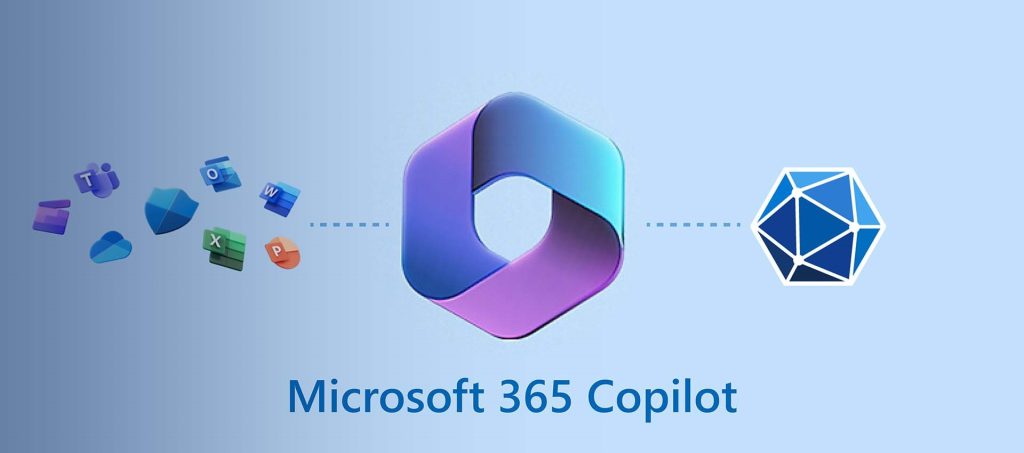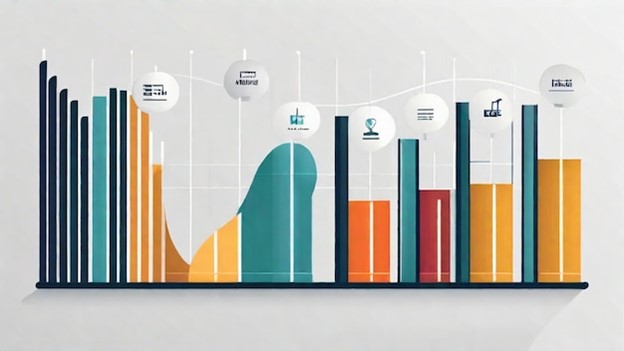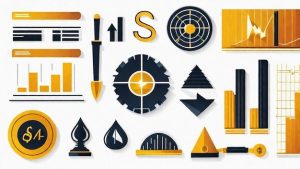How to Optimize Project Costs for Success
As a business owner or manager, understanding and optimizing the cost structure of your projects is crucial for long-term success. The cost structure business model canvas provides a comprehensive framework for analyzing, managing, and optimizing project costs. In this article, we will explore the components of the cost structure business model canvas, define the concept of cost structure, and discuss strategies for optimizing project costs. By leveraging the cost structure business model canvas, you can make informed decisions and achieve greater profitability.
Understanding the Importance of Cost Structure in Business
Cost structure plays a pivotal role in the overall success of a business. It refers to the composition of a company’s costs, including both fixed and variable expenses. By understanding the cost structure, businesses can identify areas where costs can be reduced or optimized, leading to improved financial performance and competitive advantage.
A well-designed cost structure can help businesses achieve several key objectives. Firstly, it enables effective cost control, allowing companies to allocate resources efficiently and minimize wastage. Secondly, it facilitates accurate pricing decisions, ensuring that products or services are priced in a way that covers costs and generates profit. Lastly, it provides insights into the scalability of a business, helping entrepreneurs and investors assess the viability of scaling operations.
Exploring the Components of the Cost Structure Business Model Canvas
The cost structure business model canvas consists of several key components that provide a holistic view of a company’s cost structure. These components include:
Direct Costs: These are the expenses directly associated with producing goods or delivering services. Examples include raw materials, direct labor, and packaging costs. Analyzing and optimizing direct costs can have a significant impact on a project’s profitability.
Indirect Costs: Indirect costs are expenses that are not directly tied to a specific product or service but are necessary for the overall operation of the business. They include items such as rent, utilities, and administrative expenses. Understanding and managing indirect costs is essential for maintaining a healthy cost structure.
Fixed Costs: Fixed costs are expenses that remain constant regardless of the level of production or sales. Examples include rent, salaries, and insurance premiums. While fixed costs cannot be easily changed in the short term, they can be optimized in the long run through strategic decision-making.
Variable Costs: Variable costs fluctuate with the level of production or sales. These costs are directly tied to the volume of production, or the number of units sold. Examples include raw materials, direct labor, and sales commissions. Analyzing and managing variable costs can help businesses achieve cost savings and improve profitability.
Defining Cost Structure and Its Role in a Business Model
Cost structure refers to the allocation of expenses within a business model. It provides a clear understanding of how costs are incurred and how they impact the overall financial performance of a company. By defining the cost structure, businesses can make informed decisions about resource allocation, pricing strategies, and cost optimization.
A well-designed cost structure aligns with the overall business strategy and ensures that costs are allocated in a way that supports the company’s goals. It helps identify cost drivers, which are the activities or factors that influence costs the most. By understanding these cost drivers, businesses can focus on optimizing the areas that have the most significant impact on the cost structure.
Cost structure also plays a crucial role in determining the breakeven point, which is the level of sales or production at which a company covers all its costs and begins generating profit. By analyzing the cost structure, businesses can assess the breakeven point and make informed decisions about pricing, sales targets, and cost reduction initiatives.
Breaking Down the Cost Structure: Fixed Costs vs. Variable Costs
To gain a deeper understanding of the cost structure, it is essential to distinguish between fixed costs and variable costs. Fixed costs are expenses that do not vary with the level of production or sales. They remain constant regardless of the business’s activity level. Examples of fixed costs include rent, salaries, and insurance premiums.
On the other hand, variable costs are directly tied to the volume of production or sales. They fluctuate with the level of activity. Examples of variable costs include raw materials, direct labor, and sales commissions. Variable costs increase as production or sales increase and decrease as production or sales decrease.
By breaking down the cost structure into fixed and variable costs, businesses can identify areas where costs can be reduced or optimized. Fixed costs can be managed through long-term strategic decisions such as renegotiating lease agreements or optimizing staffing levels. Variable costs can be controlled through operational efficiencies, supplier negotiations, and process improvements.
Strategies for Optimizing Project Costs Using the Cost Structure Business Model Canvas
Optimizing project costs is a critical aspect of achieving project success. By leveraging the cost structure business model canvas, businesses can implement strategies to reduce costs, increase efficiency, and improve profitability. Here are some strategies for optimizing project costs:
Value Engineering: Value engineering involves analyzing the cost structure of a project and identifying opportunities to reduce costs without compromising quality. This can be achieved by reevaluating design choices, exploring alternative materials or suppliers, or streamlining production processes.
Strategic Sourcing: Strategic sourcing involves evaluating and selecting suppliers based on their ability to provide high-quality goods or services at competitive prices. By strategically sourcing materials, businesses can negotiate better prices, reduce supply chain risks, and improve overall project costs.
Process Optimization: Process optimization focuses on improving the efficiency and effectiveness of production processes. By eliminating bottlenecks, reducing waste, and improving workflow, businesses can achieve cost savings and enhance project outcomes.
Risk Management: Effective risk management can help mitigate unexpected costs and project delays. By identifying potential risks, developing contingency plans, and monitoring project progress, businesses can minimize the impact of risks on project costs.
Real-life Examples of Successful Cost Structure Optimization
To illustrate the practical application of the cost structure business model canvas, let’s explore two real-life examples of successful cost structure optimization:
Example 1 – Automotive Manufacturing: A leading automotive manufacturer analyzed its cost structure and identified significant cost savings opportunities. By strategically sourcing raw materials, optimizing production processes, and implementing lean manufacturing principles, the company achieved a substantial reduction in overall project costs without compromising product quality.
Example 2 – E-commerce Retailer: An e-commerce retailer leveraged the cost structure business model canvas to optimize its fulfillment operations. By analyzing the cost structure, the company identified areas where costs could be reduced, such as packaging materials and shipping fees. Through strategic negotiations with suppliers and process improvements, the retailer achieved significant cost savings while maintaining high customer satisfaction levels.
These examples demonstrate how businesses can effectively leverage the cost structure business model canvas to optimize project costs and improve overall profitability.
Tools and Techniques for Analyzing and Managing Cost Structure
Analyzing and managing cost structure requires the use of various tools and techniques. Here are some commonly used tools and techniques for effectively managing cost structure:
Cost Accounting Systems: Cost accounting systems provide businesses with the ability to track, analyze, and report on costs associated with different aspects of the business. These systems can help identify cost drivers, allocate costs accurately, and generate valuable insights for cost optimization.
Activity-Based Costing (ABC): ABC is a cost allocation method that assigns costs to specific activities based on their consumption of resources. By using ABC, businesses can identify the activities that drive costs the most and make informed decisions about resource allocation and process improvement.
Cost-Benefit Analysis: Cost-benefit analysis is a technique used to compare the costs and benefits of different options or projects. By quantifying both the costs and the benefits, businesses can evaluate the financial viability of various initiatives and make informed decisions about cost optimization.
Benchmarking: Benchmarking involves comparing a company’s cost structure to industry standards or best practices. By benchmarking, businesses can identify areas where costs are higher than average and implement strategies to bring them in line with industry benchmarks.
Common Challenges and Pitfalls in Managing Cost Structure
While optimizing cost structure is essential for project success, there are common challenges and pitfalls that businesses may encounter. It is crucial to be aware of these challenges and take proactive measures to address them. Here are some common challenges and pitfalls in managing cost structure:
Lack of Data Accuracy: Accurate and reliable data is essential for effective cost analysis and management. Businesses may face challenges in collecting and validating data, leading to inaccurate cost allocation and suboptimal decision-making. Implementing robust data collection and validation processes is key to overcoming this challenge.
Resistance to Change: Implementing cost optimization initiatives often requires changes to existing processes, systems, or supplier relationships. Resistance to change from employees or stakeholders can hinder the successful implementation of cost structure optimization strategies. Effective change management and communication are vital to address this challenge.
Unforeseen External Factors: External factors such as changes in market conditions, regulations, or supplier costs can impact the cost structure and undermine optimization efforts. It is important for businesses to regularly monitor and assess external factors to proactively identify potential risks and adjust cost optimization strategies accordingly.
Conclusion: Leveraging the Cost Structure Business Model Canvas for Project Success
In conclusion, the cost structure business model canvas is a valuable tool for analyzing, managing, and optimizing project costs. By understanding the components of the cost structure, businesses can make informed decisions about resource allocation, pricing strategies, and cost optimization. Through strategies such as value engineering, strategic sourcing, process optimization, and risk management, businesses can achieve significant cost savings and improve project outcomes.
However, it is important to be aware of the common challenges and pitfalls in managing cost structure and take proactive measures to address them. By leveraging tools and techniques such as cost accounting systems, activity-based costing, and cost-benefit analysis, businesses can effectively analyze and manage cost structure.
By optimizing cost structure using the cost structure business model canvas, businesses can achieve long-term success, improved profitability, and a competitive advantage in the market. So, take the first step today and start uncovering the potential of your cost structure for project success!

















